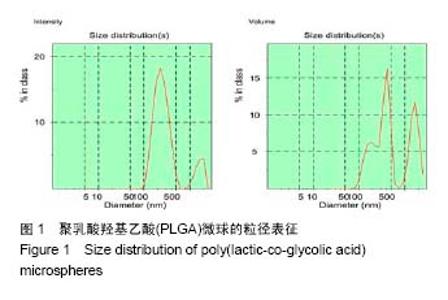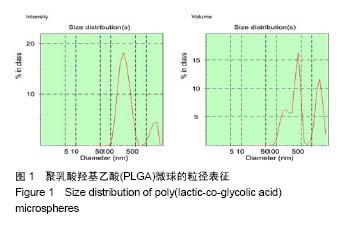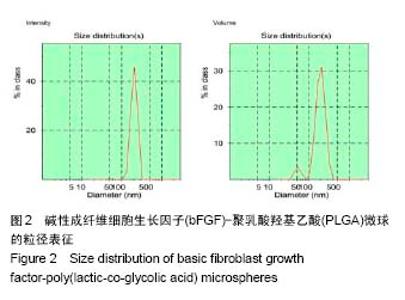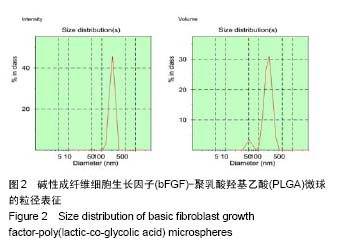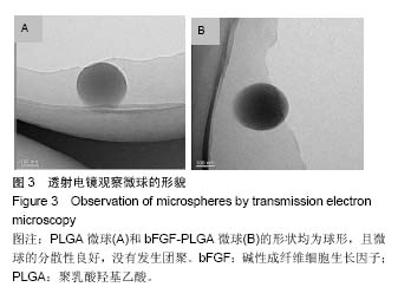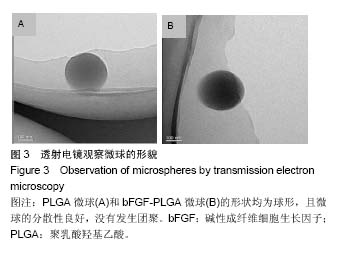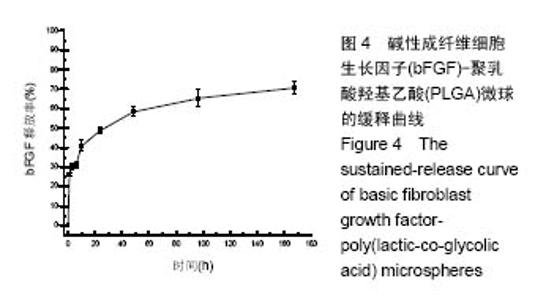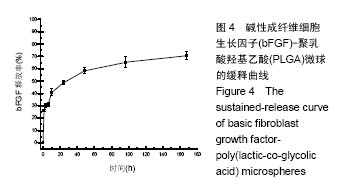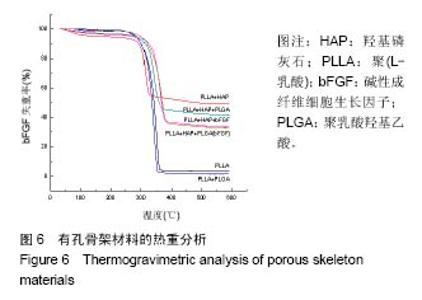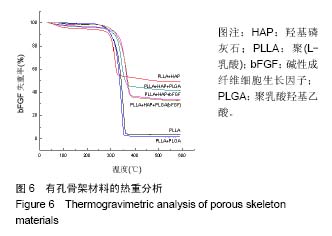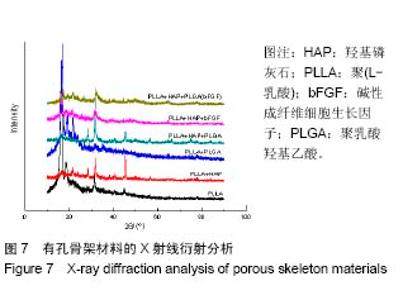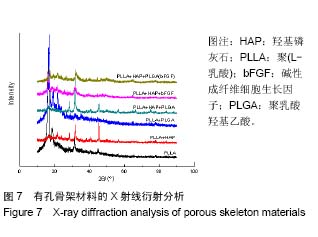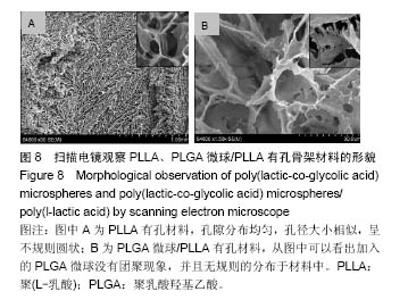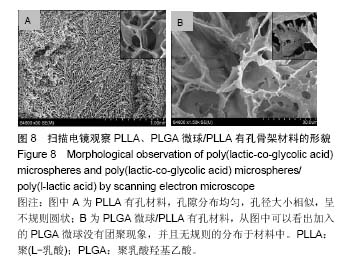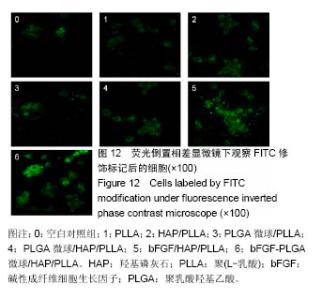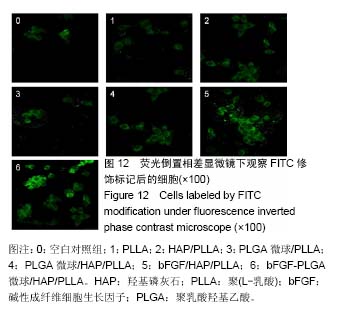Chinese Journal of Tissue Engineering Research ›› 2018, Vol. 22 ›› Issue (6): 914-920.doi: 10.3969/j.issn.2095-4344.0068
Previous Articles Next Articles
Biocompatibility of basic fibroblast growth factor-poly(lactic-co-glycolic acid) microspheres/ hydroxyapatite/poly(l-lactic acid) porous materialsBiocompatibility of basic fibroblast growth factor-poly(lactic-co-glycolic acid) microspheres/ hydroxyapatite/poly(l-lactic acid) porous materials
- 1Department of Orthopedics, Xiangya Third Hospital of Central South University, Changsha 410013, Hunan Province, China; 2the Central Hospital of Yongzhou, Yongzhou 425006, Hunan Province, China
-
Received:2017-09-07Online:2018-02-28Published:2018-02-28 -
Contact:Zhu Zhi-bo, Master, Attending physician, the Central Hospital of Yongzhou, Yongzhou 425006, Hunan Province, China -
About author:Li Zhi-yue, M.D., Associate chief physician, Department of Orthopedics, Xiangya Third Hospital of Central South University, Changsha 410013, Hunan Province, China
CLC Number:
Cite this article
Li Zhi-yue, Zhu Zhi-bo, Zhao Qun, Xiang Si-yu, Zhao Peng, Xu Zhe-wei. Biocompatibility of basic fibroblast growth factor-poly(lactic-co-glycolic acid) microspheres/ hydroxyapatite/poly(l-lactic acid) porous materialsBiocompatibility of basic fibroblast growth factor-poly(lactic-co-glycolic acid) microspheres/ hydroxyapatite/poly(l-lactic acid) porous materials[J]. Chinese Journal of Tissue Engineering Research, 2018, 22(6): 914-920.
share this article
Add to citation manager EndNote|Reference Manager|ProCite|BibTeX|RefWorks
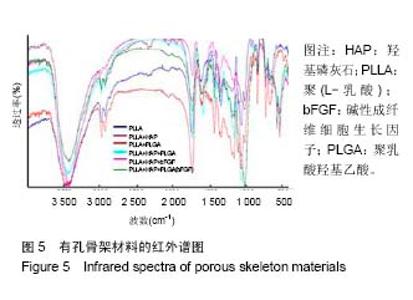
2.2 有孔骨架材料相关表征的结果 2.2.1 有孔骨架材料的红外谱图 从图5可以看出,6种有孔骨架材料的红外谱图相似度较高,谱图中主要显示出了PLLA、PLGA、HAP的特征吸收峰。从红外谱图中可知,1 758 cm-1为C=O伸缩振动峰;1 184 cm-1为C-O伸展振动引起的吸收峰,1 456 cm-1为C-H变形振动引起的吸收峰,1 367 cm-1为-CH3吸收峰,2 900 cm-1为亚甲基的C-H伸展振动吸收峰,这些特征吸收峰证明了PLLA的存在; 1 217 cm-1、1 185 cm-1、1 130 cm-1、1 044 cm-1处有酯醚键(C-O-C)的伸缩振动峰,2 997 cm-1为共聚酯中的碳氢键(C-H)的伸缩振动峰,3 467 cm-1为共聚酯中羟基(-OH)的特征吸收峰,这些特征吸收峰证明了PLGA微球的存在;3 435 cm-1和1 629 cm-1为-OH的特征吸收峰,1 044 cm-1处为PO43-的特征吸收峰,868 cm-1处为HPO42-的特征吸收峰,在602 cm-1和566 cm-1处为PO43-的特征吸收峰,这些特征吸收峰证明了羟基磷灰石的存在。"
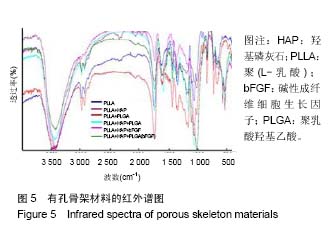
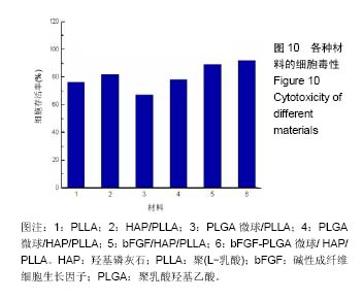
2.3 不同材料对大鼠骨髓间充质干细胞的毒性实验 从图10中可以看到,材料毒性按照从小到大的顺序依次为bFGF-PLGA微球/HAP/PLLA,bFGF/HAP/PLLA,HAP/ PLLA,PLGA微球/HAP/PLLA,PLLA,PLGA微球/ PLLA。按美国药典细胞毒性分级标准对其进行毒性分级,PLGA微球/PLLA、PLGA微球/HAP/PLLA、PLLA材料的细胞毒性为2级(细胞相对存活率≥50%),具有一定的细胞毒性;bFGF-PLGA微球/HAP/PLLA,bFGF/HAP/PLLA,HAP/ PLLA材料的细胞毒性级别为1级(细胞相对存活率≥80%),说明没有明显毒性或者有轻微毒性。"
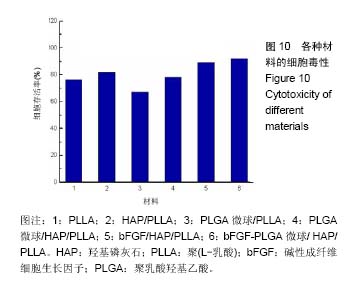
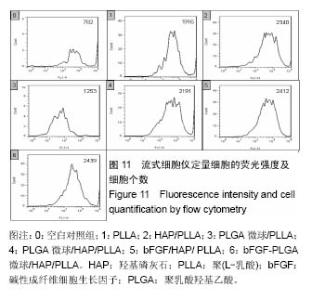
2.4 大鼠骨髓间充质干细胞在复合有孔骨架材料上的增殖情况 采用流式细胞仪定量细胞的荧光强度及细胞数量,见图11。细胞数量由少到多依次为:空白对照(782个)、PLGA微球/PLLA(1 253个)、PLLA(1 916个)、PLGA微球/ HAP/PLLA(2 191个)、HAP/PLLA(2 340个)、bFGF/ HAP/ PLLA(2 412个)、bFGF-PLGA微球/ HAP/PLLA(2 439个)。 荧光倒置相差显微镜计数FITC修饰标记后的细胞,见图12。细胞数量由少到多依次为:空白对照(4个)、PLGA微球/PLLA(7个)、PLLA(9个)、PLGA微球/HAP/PLLA(15个)、HAP/PLLA(20个)、bFGF/HAP/PLLA(25个)、bFGF- PLGA微球/HAP/PLLA(29个)。"
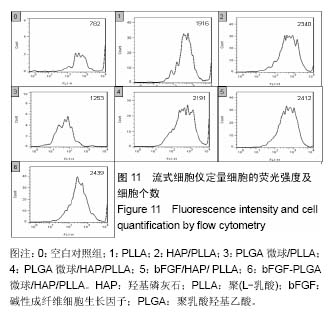
| [1]Parsons B, Strauss E. Surgical management of chronic osteomyelitis. Am J Surg. 2004;188(1A Suppl):57-66.[2]Kovacevic D, Fox AJ, Bedi A, et al. Calcium-phosphate matrix with or without TGF-β3 improves tendon-bone healing after rotator cuff repair. Am J Sports Med. 2011;39(4):811-819.[3]Servin-Trujillo MA, Reyes-Esparza JA, Garrido-Fariña G, et al. Use of a graft of demineralized bone matrix along with TGF-β1 leads to an early bone repair in dogs. J Vet Med Sci. 2011;73(9): 1151-1161.[4]Bichara DA, O'Sullivan NA, Pomerantseva I, et al. The tissue-engineered auricle: past, present, and future. Tissue Eng Part B Rev. 2012;18(1):51-61.[5]Eppley BL, Pietrzak WS, Blanton MW. Allograft and alloplastic bone substitutes: a review of science and technology for the craniomaxillofacial surgeon. J Craniofac Surg. 2005;16(6): 981-989.[6]Goldberg VM. Selection of bone grafts for revision total hip arthroplasty. Clin Orthop Relat Res. 2000;(381):68-76.[7]Karaoglu S, Baktir A, Kabak S, et al. Experimental repair of segmental bone defects in rabbits by demineralized allograft covered by free autogenous periosteum. Injury. 2002;33(8): 679-683.[8]Clayer M. Injectable form of calcium sulphate as treatment of aneurysmal bone cysts. ANZ J Surg. 2008;78(5):366-370.[9]Yang J, Yamato M, Nishida K, et al. Cell delivery in regenerative medicine: the cell sheet engineering approach. J Control Release. 2006;116(2):193-203.[10]Ouyang HW, Toh SL, Goh J, et al. Assembly of bone marrow stromal cell sheets with knitted poly (L-lactide) scaffold for engineering ligament analogs. J Biomed Mater Res B Appl Biomater. 2005;75(2):264-271.[11]Castoldi M, Pistone M, Caruso C, et al. Osteoblastic cells from rat long bone. II: Adhesion to substrata and integrin expression in primary and propagated cultures. Cell Biol Int. 1997;21(1):7-16.[12]Manduca P, Sanguineti C, Pistone M, et al. Differential expression of alkaline phosphatase in clones of human osteoblast-like cells. J Bone Miner Res. 1993;8(3):291-300.[13]Huibregtse BA, Johnstone B, Goldberg VM, et al. Effect of age and sampling site on the chondro-osteogenic potential of rabbit marrow-derived mesenchymal progenitor cells. J Orthop Res. 2000;18(1):18-24.[14]Service RF. Tissue engineers build new bone. Science. 2000; 289(5484):1498-1500.[15]Srouji S, Blumenfeld I, Rachmiel A, et al. Bone defect repair in rat tibia by TGF-beta1 and IGF-1 released from hydrogel scaffold. Cell Tissue Bank. 2004;5(4):223-230.[16]Schnettler R, Alt V, Dingeldein E, et al. Bone ingrowth in bFGF-coated hydroxyapatite ceramic implants. Biomaterials. 2003;24(25):4603-4608.[17]Tan HC, Lei J, Jiang DZ. Effect of bFGF on hematopoietic regulation of bone marrow stromal cells. Hunan Yi Ke Da Xue Xue Bao. 2003;28(1):83-84.[18]Varkey M, Kucharski C, Haque T, et al. In vitro osteogenic response of rat bone marrow cells to bFGF and BMP-2 treatments. Clin Orthop Relat Res. 2006;443:113-123.[19]Li Y, Chen HQ, Cheng M, et al. Bone marrow stromal cells co-modified with BMP-2 and bFGF gene.Xi Bao Yu Fen Zi Mian Yi Xue Za Zhi. 2006;22(2):133-136.[20]Kilic MA, Ozlu E, Calis S. A novel protein-based anticancer drug encapsulating nanosphere: apoferritin-doxorubicin complex. J Biomed Nanotechnol. 2012;8(3):508-514.[21]Batheja P, Sheihet L, Kohn J, et al. Topical drug delivery by a polymeric nanosphere gel: Formulation optimization and in vitro and in vivo skin distribution studies. J Control Release. 2011;149(2):159-167.[22]Estevanato L, Cintra D, Baldini N, et al. Preliminary biocompatibility investigation of magnetic albumin nanosphere designed as a potential versatile drug delivery system. Int J Nanomedicine. 2011;6:1709-1717.[23]Vukomanovi? M, Skapin SD, Poljanšek I, et al. Poly(D,L-lactide-co-glycolide)/hydroxyapatite core-shell nanosphere. Part 2: Simultaneous release of a drug and a prodrug (clindamycin and clindamycin phosphate). Colloids Surf B Biointerfaces. 2011;82(2):414-421.[24]Holmes TC. Novel peptide-based biomaterial scaffolds for tissue engineering. Trends Biotechnol. 2002;20(1):16-21.[25]Tsuchiya A, Sotome S, Asou Y, et al. Effects of pore size and implant volume of porous hydroxyapatite/collagen (HAp/Col) on bone formation in a rabbit bone defect model. J Med Dent Sci. 2008;55(1):91-99.[26]Zhang H, Wang W, Chu D, et al. Preliminary study on chitosan/HAP bilayered scaffold. Zhongguo Xiu Fu Chong Jian Wai Ke Za Zhi. 2008;22(11):1358-1363.[27]Han XQ, Han XQ, Dong ZH, et al. Experimental study of tissue-engineered bone constructed with simvastatin carried by PLGA/CPC and bone marrow stromal cells. Shanghai Kou Qiang Yi Xue. 2014;23(1):7-14.[28]Lee K, Weir MD, Lippens E, et al. Bone regeneration via novel macroporous CPC scaffolds in critical-sized cranial defects in rats. Dent Mater. 2014;30(7):e199-207. |
| [1] | Zhang Tongtong, Wang Zhonghua, Wen Jie, Song Yuxin, Liu Lin. Application of three-dimensional printing model in surgical resection and reconstruction of cervical tumor [J]. Chinese Journal of Tissue Engineering Research, 2021, 25(9): 1335-1339. |
| [2] | Zeng Yanhua, Hao Yanlei. In vitro culture and purification of Schwann cells: a systematic review [J]. Chinese Journal of Tissue Engineering Research, 2021, 25(7): 1135-1141. |
| [3] | Xu Dongzi, Zhang Ting, Ouyang Zhaolian. The global competitive situation of cardiac tissue engineering based on patent analysis [J]. Chinese Journal of Tissue Engineering Research, 2021, 25(5): 807-812. |
| [4] | Wu Zijian, Hu Zhaoduan, Xie Youqiong, Wang Feng, Li Jia, Li Bocun, Cai Guowei, Peng Rui. Three-dimensional printing technology and bone tissue engineering research: literature metrology and visual analysis of research hotspots [J]. Chinese Journal of Tissue Engineering Research, 2021, 25(4): 564-569. |
| [5] | Chang Wenliao, Zhao Jie, Sun Xiaoliang, Wang Kun, Wu Guofeng, Zhou Jian, Li Shuxiang, Sun Han. Material selection, theoretical design and biomimetic function of artificial periosteum [J]. Chinese Journal of Tissue Engineering Research, 2021, 25(4): 600-606. |
| [6] | Liu Fei, Cui Yutao, Liu He. Advantages and problems of local antibiotic delivery system in the treatment of osteomyelitis [J]. Chinese Journal of Tissue Engineering Research, 2021, 25(4): 614-620. |
| [7] | Li Xiaozhuang, Duan Hao, Wang Weizhou, Tang Zhihong, Wang Yanghao, He Fei. Application of bone tissue engineering materials in the treatment of bone defect diseases in vivo [J]. Chinese Journal of Tissue Engineering Research, 2021, 25(4): 626-631. |
| [8] | Zhang Zhenkun, Li Zhe, Li Ya, Wang Yingying, Wang Yaping, Zhou Xinkui, Ma Shanshan, Guan Fangxia. Application of alginate based hydrogels/dressings in wound healing: sustained, dynamic and sequential release [J]. Chinese Journal of Tissue Engineering Research, 2021, 25(4): 638-643. |
| [9] | Chen Jiana, Qiu Yanling, Nie Minhai, Liu Xuqian. Tissue engineering scaffolds in repairing oral and maxillofacial soft tissue defects [J]. Chinese Journal of Tissue Engineering Research, 2021, 25(4): 644-650. |
| [10] | Xing Hao, Zhang Yonghong, Wang Dong. Advantages and disadvantages of repairing large-segment bone defect [J]. Chinese Journal of Tissue Engineering Research, 2021, 25(3): 426-430. |
| [11] | Chen Siqi, Xian Debin, Xu Rongsheng, Qin Zhongjie, Zhang Lei, Xia Delin. Effects of bone marrow mesenchymal stem cells and human umbilical vein endothelial cells combined with hydroxyapatite-tricalcium phosphate scaffolds on early angiogenesis in skull defect repair in rats [J]. Chinese Journal of Tissue Engineering Research, 2021, 25(22): 3458-3465. |
| [12] | Wang Hao, Chen Mingxue, Li Junkang, Luo Xujiang, Peng Liqing, Li Huo, Huang Bo, Tian Guangzhao, Liu Shuyun, Sui Xiang, Huang Jingxiang, Guo Quanyi, Lu Xiaobo. Decellularized porcine skin matrix for tissue-engineered meniscus scaffold [J]. Chinese Journal of Tissue Engineering Research, 2021, 25(22): 3473-3478. |
| [13] | Mo Jianling, He Shaoru, Feng Bowen, Jian Minqiao, Zhang Xiaohui, Liu Caisheng, Liang Yijing, Liu Yumei, Chen Liang, Zhou Haiyu, Liu Yanhui. Forming prevascularized cell sheets and the expression of angiogenesis-related factors [J]. Chinese Journal of Tissue Engineering Research, 2021, 25(22): 3479-3486. |
| [14] | Liu Chang, Li Datong, Liu Yuan, Kong Lingbo, Guo Rui, Yang Lixue, Hao Dingjun, He Baorong. Poor efficacy after vertebral augmentation surgery of acute symptomatic thoracolumbar osteoporotic compression fracture: relationship with bone cement, bone mineral density, and adjacent fractures [J]. Chinese Journal of Tissue Engineering Research, 2021, 25(22): 3510-3516. |
| [15] | Liu Liyong, Zhou Lei. Research and development status and development trend of hydrogel in tissue engineering based on patent information [J]. Chinese Journal of Tissue Engineering Research, 2021, 25(22): 3527-3533. |
| Viewed | ||||||
|
Full text |
|
|||||
|
Abstract |
|
|||||
